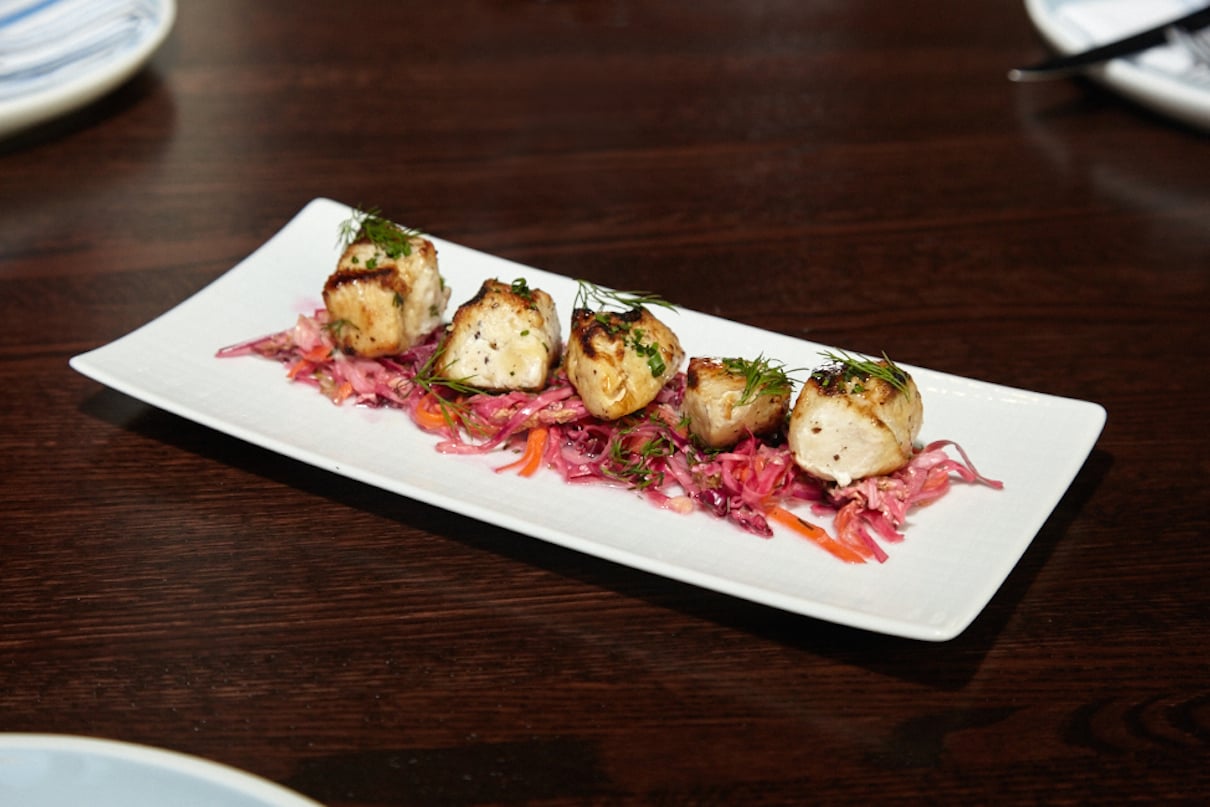There seems to be a focus in the March issue on derivative works—and not in a negative sense—where Galileo is reinvented for the masses in Crystal City and some of Olazzo’s former staff is opening a new spot in Rockville. What’s the larger story?
One thing that’s interesting here is that Roberto Donna is a big-time chef who’s opened a really affordable, casual spot. This is a trend that began in Paris, with big-time chefs opening places—alongside or downstairs from their formal, expensive restaurants—where ordinary folks could eat. “Gastro bistros.” The key thing is that these chefs didn’t condescend. Simpler, cheaper food—but still done with passion and pride. It took off in New York, too.
In this area, the trendsetter was Palena, where Frank Ruta converted the bar area into a cafe. It was a bold move, and it’s paid off. Palena is a place you can eat at for a special occasion and also for a cheeseburger.
Roberto Donna followed suit with the osteria in the front room of Galileo. When the restaurant had to be shut down for a year so the building could be renovated, Donna moved his operations to Crystal City and opened Bebo. What’s interesting to me is that he didn’t attempt to do something on the order of a Galileo. He patterned the new place after the osteria.
Does this relate to some of the other openings we’ve seen?
Well, there’s a boomlet now. You have Michel Richard and Central, his bistro. It’s far from Citronelle and that level of detail, but it’s good and much more affordable—fried chicken, lobster burgers, even a banana split. In a couple of months, Robert Wiedmaier is opening a place called Beck Brasserie, which is going to be as far from Marcel’s as you can get. No $42 entrees here, no Mercedes rides to the Kennedy Center, none of the famous Marcel’s pampering. It’s going to be a big, bustling spot with mussels, fries, and a boatload of Belgian beers.
Simpler food shouldn’t mean inferior food. Simpler just means less involved, less elaborate. Fewer notes, if you want to think of it that way, fewer chord changes. Sometimes a pop song can be just as interesting and just as listenable as a jazz classic. It’s the same thing with the dishes at these gastro bistros.
When you discuss the complicated issues surrounding eating seafood—in particular, the problem that overfishing has created for those looking to enjoy high-quality tuna—you lament, “Once a luxury, tuna had been democratized to the point of ubiquity. Somewhere along the way, it became something else: a food that is only good when prepared at the highest level.” What would you suggest people consider before ordering tuna?
I mean, it’s not as though tuna’s going to kill you—nothing so extreme as that. It’s just that it’s not what it was. You’re not going to get the same quality you got five years ago. Color is no guide. If you see something really brilliantly red—ruby red—it could be injected with dye. That’s an incredibly common practice now on the docks. Sushi is at least as much about texture as it is about taste, and the texture of tuna these days is soft and mealy. If the texture of tuna is mealy, what’s the point?
I would ask, if I could, where the fish came from, and when. But you may not get far with that. That begins to look like an interrogation. In nonsushi restaurants, I would pay attention to the preparation, see what pains the chef goes to in order to doctor the fish. For example, at Georgetown’s Mendocino Grille, the chef, Barry Koslow, is splashing a yuzu vinaigrette on top of his tuna carpaccio. Yuzu is a Japanese fruit, and it’s pungent and alive with citrus. So a little bit of yuzu plus a heap of crunchy seaweed and voila!—you may not even notice that the quality of the tuna is not particularly special. Chefs know what’s going on. They know the quality isn’t there. And the best ones, the savviest ones, are compensating.
Is there another example where an item or cuisine has become so popular that its own success and existence are unsustainable?
Well, I have to wonder what’s going to happen with foie gras, which has become pretty ubiquitous in high-end restaurants. The warning signs are there—it’s banned now in Chicago. I think Schwarzenegger’s putting a ban on it in his effort to reach out to liberal-backed animal-rights interest groups in California. Who’s next? Because there’s going to be a next. New York? That’d be the biggie.
I don’t have a strong opinion on this, by the way. Charlie Trotter, the four-star chef in Chicago, spoke out long before the ban about how he was going to stop serving foie gras at his restaurant—how a great chef doesn’t need to rely on foie gras to make good food. I think that’s true—or ought to be. I also know that foie gras, lobsters, truffles, and caviar are some of the great luxuries of the world, and to a lot of people, they connote a special meal.
Cynthia Hacinli’s piece on Cava in Rockville shows a backbone of knowledge about the cuisine. She even mentions her familiarity with Greek watermelon-and-feta salad as a child. How important is it for a food writer to understand his or her subject intimately? Is there a conflict, or is that an asset?
Oh, it’s an asset. She’s Armenian. She grew up with these flavors—learned them, as they say, at the elbow. She’s also spent a lot of time in Turkey and Greece. All of which is why I wanted her to write about the place. What’s interesting about Cava is that so often in this area, when you see a Greek restaurant, you can pretty much predict the menu without even opening it. As Cynthia points out, Cava is more like the places you see in the Kolonaki neighborhood of Athens—a chic place full of young, stylish people. But the cooking still has heart and soul.
The magazine has a quick profile of the Potato Valley Cafe in Annapolis. It mentions that another restaurant will open in DC. If we’re a progressive city of foodies, can a spot that serves only potatoes really be profitable?
It’s a small place, and it’s something I would love to see more of in the city: restaurants and shops that do one thing only. I would love to see places that do just soup. I would love to see an all-dessert restaurant. I would love to see an all-rice-pudding place like Rice to Riches in New York. I would like to see an all-peanut-butter place. These often find it hard to make money, so I understand the reluctance of many restaurateurs to take the plunge. But I have to think that the public would support single-theme places if they’re good. And these potatoes are good. We’re not talking about potatoes from Sizzler. We’re talking about potatoes the size of mini-Nerf footballs. They’re big, soft, and hot, and they have that wonderful mineral quality to them that all great spuds have. The kitchen’s job is to keep it simple. Swab the thing in olive oil, roast it at 400 degrees, and then slit it open and top it off with—my favorite—sour cream, slices of mango, and fried onions. Great stuff.

















